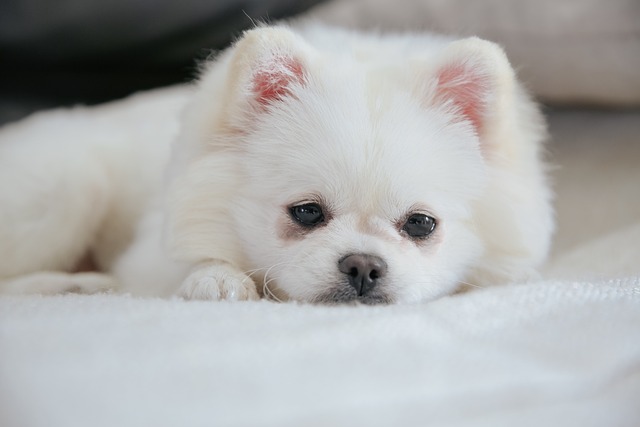
How can I tell if my dog's heatstroke is serious
Let’s be real: It’s a sticky August morning in Los Angeles, and you took your 2-year-old Golden Retriever, Max, for a walk a little later than usual
Pomeranians, with their fluffy coats and perky personalities, are prone to packing on extra pounds—especially when their owners sneak them table scraps after Sunday roasts or skip daily walks during rainy UK winters. That extra weight isn’t just a cosmetic issue; it strains their tiny joints, raises diabetes risks, and shortens lifespans. The good news? With targeted changes, even the chubbiest Pom can shed pounds and bounce back to vitality.
First, pinpoint the cause. Many overweight Pomeranians get too many calories from “treats” like leftover pasta or store-bought biscuits that exceed their daily needs. A 7-pound Pom only requires about 200 calories a day—easy to overshoot with a handful of cheddar bits. In Germany, where Poms are beloved, vets often cite “love feeding” as a top culprit: owners equate snacks with affection, not realizing the harm.
Next, revamp meal time. Swap generic kibble for high-protein, low-carb options designed for small breeds. Measure portions with a teaspoon—those tiny tummies can’t handle much. In Sweden, where pet obesity rates are rising, owners have found success with scheduled feeding times (twice daily, no exceptions) instead of leaving bowls out all day. Add a splash of low-sodium broth to make meals satisfying without extra calories.
 Exercise matters, but keep it age-appropriate. A 10-minute walk around the block twice a day works for most adult Poms. In warmer US states like Florida, stick to early mornings or evenings to avoid overheating. Play fetch with a mini tennis ball indoors on rainy days—mental stimulation burns calories too. For senior Poms with arthritis, gentle stretches during cuddle time can help maintain mobility without strain.
Exercise matters, but keep it age-appropriate. A 10-minute walk around the block twice a day works for most adult Poms. In warmer US states like Florida, stick to early mornings or evenings to avoid overheating. Play fetch with a mini tennis ball indoors on rainy days—mental stimulation burns calories too. For senior Poms with arthritis, gentle stretches during cuddle time can help maintain mobility without strain.
Check local regulations. In parts of Canada, public parks require dogs to be leashed during exercise hours—plan walks accordingly. Some UK cities have weight limits for service dogs, but companion Poms just need regular vet check-ins to ensure healthy progress. Always consult a vet before starting a weight loss plan; sudden diet changes can trigger liver issues in small breeds.
Progress takes patience. A healthy rate is 0.5-1% of body weight per week—for a 12-pound Pom, that’s just ounces. Celebrate milestones with extra playtime, not treats. In Australia, where Pomeranian clubs host “fitness challenges,” owners track progress with monthly photos and vet weigh-ins. The goal isn’t a runway-ready pup, but one who can climb stairs, chase squirrels, and enjoy long naps without struggling to catch their breath.
Yes, an overweight Pomeranian can lose weight—with the right mix of nutrition, activity, and love. Your fluffy friend will thank you with more zoomies, fewer vet visits, and years of joyful companionship.

Let’s be real: It’s a sticky August morning in Los Angeles, and you took your 2-year-old Golden Retriever, Max, for a walk a little later than usual

You're enjoying a summer afternoon at the park when you notice your dog has stopped panting and appears disoriented - their gums are bright red

Let’s paint the picture: You’re in your Denver apartment, watching your 4-year-old Boston Terrier, Ruby, plop down mid-play session with her favorite toy

Many dog owners notice their pets nails seem shorter after regular walks,but how much does this daily activity actually help?The answer depends on where you walk—concrete sidewalks or asphalt streets gently file nails as a dog's paws hit the ground

Most dog owners notice their pup scooting across the carpet at some point, but few connect it to impacted anal glands. These small sacs near a dog’s rectum secrete a scent for marking territory

Most vets agree that regular dog teeth cleaning is key to avoiding painful dental issues later. For healthy adult dogs, a professional cleaning at the vet’s office every 12 to 18 months usually works well.